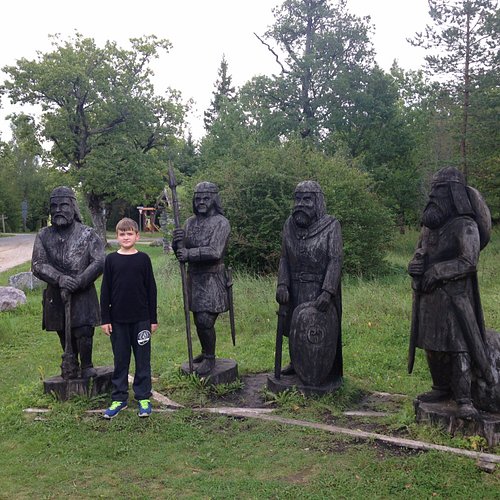5 Sights & Landmarks in Marjamaa That You Shouldn't Miss
Discover the best top things to do in Marjamaa, Estonia including Varbola Hill Fort, Haimre Chapel, Velise Apostolic Orthodox Church, St. Mary's Church, Monument to Finnish Aviators.
1. Varbola Hill Fort
Overall Ratings
4.0 based on 2 reviews
The first mention of the Varbola fortress dates back to 1212 and it was one of the biggest and most powerful ancient fortresses in Estonia and entire northern Europe. The 576 m long circular hill fort was erected on the natural slate stage in the shadows of the primeval forest and is 2-5 m high. In addition to the slate wall there was a several meters high fortification made of logs. The western gate was dug free and reconstructed. Interesting to know:·A quarter million horse cartloads of slate were brought here to build the walls. The Varbola fortress was never conquered by any enemy.·Here you can see a turret, a bricole and a battering ram·Visit us in August on the big event Varbola Puu (Varbola Tree)!·You can have an enjoyable picnic here!
2. Haimre Chapel
Overlooking a pond in Haimre park you will find an unusually large pavilion in Neo-Gothic style whose walls have been almost completely preserved. The structure is thought to date from the late 18th century. The front of the building resembles a church, but it is not believed to have fulfilled a religious function.Did you know…?*Alexander Uexkull, the song of the lord of Haimre manor, built the ‘chapel’ for his Oriental sweetheart*Locals refer to it as the ‘chapel of Muhammad’*In the park on the Haimre estate you will also find an old but well-preserved icehouse
3. Velise Apostolic Orthodox Church
The Velise church was built according to the plans of Ervin Berhard. Stonecutters were brought in from the Lake Peipus area. The richness of decoration which is characteristic of the Russian art of construction was toned down to fit in with the Estonian culture through the skilled use of colour contrast between bricks and fieldstones.Did you know…?*The Velise congregation was the first to be founded during the period of active Russification in what is now Rapla County*15,000 roubles was allocated from the budget of the Russian empire for the construction of the church*In 1889 the church was consecrated in honour of John the Baptist*The church sometimes hosts concerts*The ‘swing island’ behind the church is an ideal place to picnic and relax
4. St. Mary's Church
Marjamaa Church boasting lofty walls was built in the 14thC as the mightiest fortress-church in western Estonia. Its main characteristics are asceticism, simplicity, utility and quality. Its exceptionally high and thick walls used to be capped with balustrades.Marjamaa Church is the only fully preserved medieval church in Rapla County. Interesting to know:The church is approached by a memorial gate commemorating the Estonian War of Independence.The churchyard contains a Maltese stone cross dating from 1720 and bearing the inscription “Mu Poig”. In terms of interior proportions, the church is considered to be the finest of all Estonian county churches.At the times of the Livonian War, the shelter above the arches saved locals from the troops of the Russian ruler Ivan the Terrible.
5. Monument to Finnish Aviators
On 16 August 1941 a Finnish plane dropped flyers over northern Estonia. Flying into a storm cloud, the pilot lost his bearings and, attempting to make an emergency landing, crashed into the only birch tree in an entire hay field. The pilot, Junior Sergeant Penntti Johannes Antila, and his mechanic, Antti Adolf Sairo, were both killed. 56 years to the day after the accident a memorial of the Estonian and Finnish ministries of defence was unveiled to the aviators.Did you know…?*The sculptor of the memorial, Heikki Haivaoja, is responsible for the image on the reverse of Finland’s euro coins



